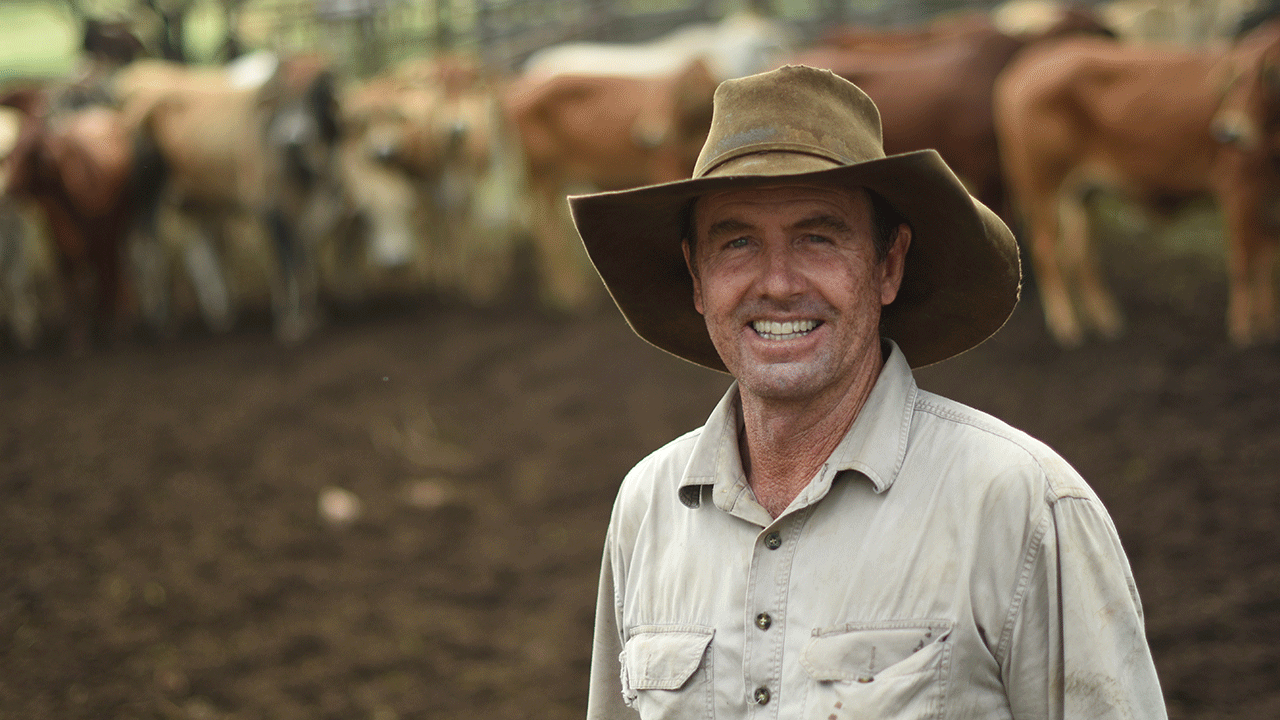
Russell Lethbridge
Russell Lethbridge
Imagine if someone told you they were able to lift their weaning rates by more than one third, reduce breeder mortalities to 0.5% and improve turnoff weights by 15%.
Imagine if someone told you they were able to lift their weaning rates by more than one third, reduce breeder mortalities to 0.5% and improve turnoff weights by 15%.
That’s exactly what Russell and Donna Lethbridge have done.
And to further prove it’s not just theory out of a book, the couple’s Werrington Cattle Company, based north of Hughenden in North Queensland, operates in a harsh environment where any theory is well and truly put to the test.
With the help of genetic selection, they’ve done two main things to produce these results:
-
invested in sires with above-average traits for reproduction from a performance-recorded herd with similar breeding objectives
-
applied selection pressure on the breeder herd for reproductive performance.
Russell said, in their region, breeder mortality rates are typically high and reproduction rates are low. This is a result of native pasture nutrition levels well below that required for animal maintenance for up to nine months each year.
But instead of allowing the environment to dictate Werrington’s performance, Russell and Donna have used genetic selection to help them build a more fertile, resilient herd, showing that enormous production and profit improvements can be made in even the toughest of places.
During the past 25 years, the couple have proven to themselves that:
-
selecting for fertility is indirectly selecting for adaptability and ‘doing’ ability
-
removing nonperforming females (for reproduction) improves entire herd performance
-
weaning rates can be lifted from 45% to 72%
-
breeder mortality can be reduced to 0.5%.
Breeding objectives
Where did they start? The first step was to identify a breeding objective – they wanted an early maturing, highly fertile Brahman herd whose progeny would appeal to a broad range of markets.
Their approach was surprisingly simple – select for reproduction and the rest will follow.
“I breed to produce a marketable animal – one that is fleshy and early maturing, will put muscle on bones at any time after 12 months and will lay down fat before it’s three years old,” Russell said.
To achieve this, Donna and Russell cull non-productive females, and only buy bulls with above average BREEDPLAN ‘days to calving’ values and whose dams are proven reproductive performers.
“The reliability of the mother is very important,” Russell said.
“If she’s had nine calves in 10 years, it’s her genetics I want.”
All females are pregnancy tested each year after a four-month controlled mating period, and all empties become part of the cull cow income stream.
Heifers, on the other hand, face their biggest fertility challenge first up – a 10-week joining.
However, pregnancy test results are regularly above 90%, a vast improvement on the 40–50% rate the Lethbridges accepted 25 years ago.
“Where it really pays off is with the first calvers,” Russell said.
“We know we can successfully rejoin about 75% on no rain and in challenging conditions.”
This approach means the entire herd of about 3,000 breeders is young, with about one-third of the annual calf drop out of maiden heifers.
However, recent benchmarking has shown that these young heifers hold their own. The herd operates at 20% above the district average for reproduction efficiency, and its weaning rate is 25% above the industry average for northern Queensland.
Choosing the right bulls
“When they are selecting bulls, I think people are too obsessed with growth traits and don’t pay enough attention to fertility indicators such as moderate frame size, days to calving, calving ease and scrotal circumference,” Russell said.
“Our most progressive move was finding a seedstock producer who had the same commercial trait objectives as us. Clearly, making the demands on our females was only improving us so far.”
Russell does not consider growth traits directly when buying bulls but has found that selection using breeding values and indexes has helped improve carcase weights (taking them to 220–240kg carcase weight).
He believes improved female reproduction also translates to improved adaptation to the environment, with their breeder mortality rate having fallen from 5% to 0.5% over 25 years.